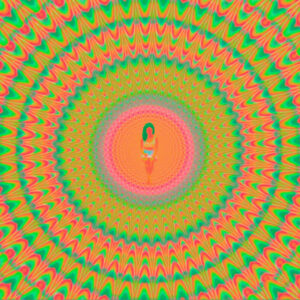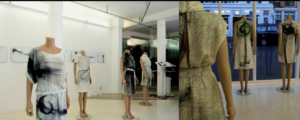I find the work that he did the Process 18 project to be very interesting. It’s about the nature of noise or jitters. I think that whether in a controlled or uncontrolled environment, noise particles seem to group together, or in other words, homogenize, and create odd/unique patterns. Reas proves in this project that his noise system gradually became homogenous and over time, the system still kept its homogenous characteristic but added more resolution in time and space. What I wish Reas could do is maybe to add some sort of catalyst to the noise experiment, to see how such a catalyst could impact the way the particles behave over time, mimicking the real environment.
I also find his commission work in creating composited photos for the Frank Gary in Miami Beach as a miniature version of the Disney Concert Hall Los Angeles to be intriguing. Reas and his colleague Rosner used randomness as a jumping off point in tailoring the printed compositions. A lot of decision making was also taken into account to determine how they want the compositions to feel like. One of the details Reas shared behind the process is that the team rolled the dice in putting the images of the neighborhood together wherever they want it to be with a condition that they had to be at 90° angles to trigger the final composition. We talked about how randomness can prove to be a useful tool in coding in class. In Reas’ example, it not only helps him and his colleague come up with exciting artworks but also acquire a firmer grasp of the process while observing the pattern to arrive at the outcome. His work support the fac that randomness and decision making, although seeming to contrast one another, can be a helpful combination for observation in interactive media coding.


